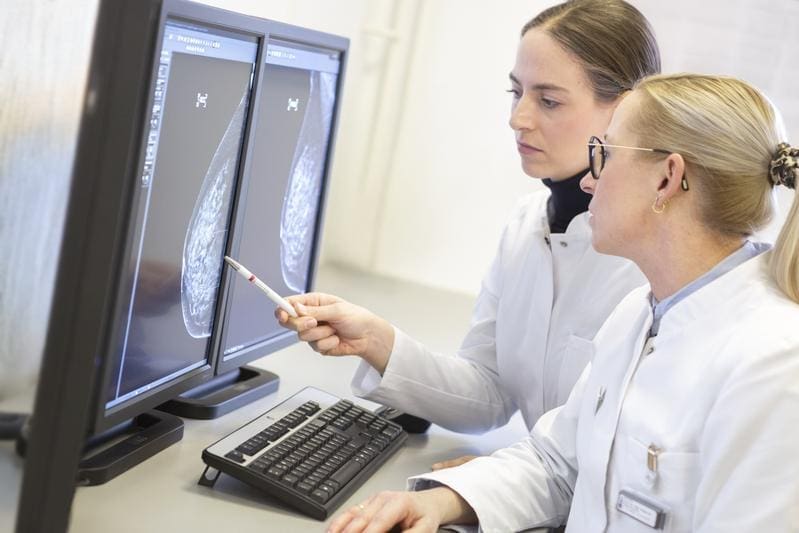Mammography screening significantly increases detection of early breast cancer cases
The German mammography screening program is proving successful: regular participation leads to a higher detection rate of small, prognostically favorable breast carcinomas. Current evaluations show that of around 2.9 million women screened – a participation rate of 51% – around 18,000 carcinomas were diagnosed. 80 % of these tumors were a maximum of 2 cm in size and without lymph node involvement, a significant improvement compared to 57 % before the start of the program.
“Screening increases the chance of detecting breast cancer early and treating it successfully,” emphasizes Dr. Karin Bock, Head of the Southwest Mammography Reference Centre. The reappointment rate for follow-up examinations is 2.9%, and breast cancer is detected in 6 out of every 1,000 women screened. The detection rate increases particularly between the ages of 65 and 69: 8 out of 1,000 follow-up participants are diagnosed, twice as many as younger women under 65.

First-time participants at an older age have an increased risk of undetected cancer. Women aged 65 to 69 who participate for the first time are more than twice as likely to be diagnosed with breast cancer than regular participants. “Regular examinations every two years bring the greatest benefit,” explains Dr. Bock. “In women who have not been screened for a long time, we see advanced carcinomas more frequently, especially in the 50 to 69 age group and in older women up to 75 years of age.”
German mammography screening, the largest quality-assured program in Europe, offers free early detection to around 14.5 million women between the ages of 50 and 75. “Continuous participation is crucial in order to minimize the risk of serious complications,” summarizes Dr. Bock.
The articles in the news section are produced by X-Press journalist office
Gender note. The personal designations used in this text always refer equally to female, male and diverse persons. Double/triple references and gendered designations are avoided in favor of better readability. t




